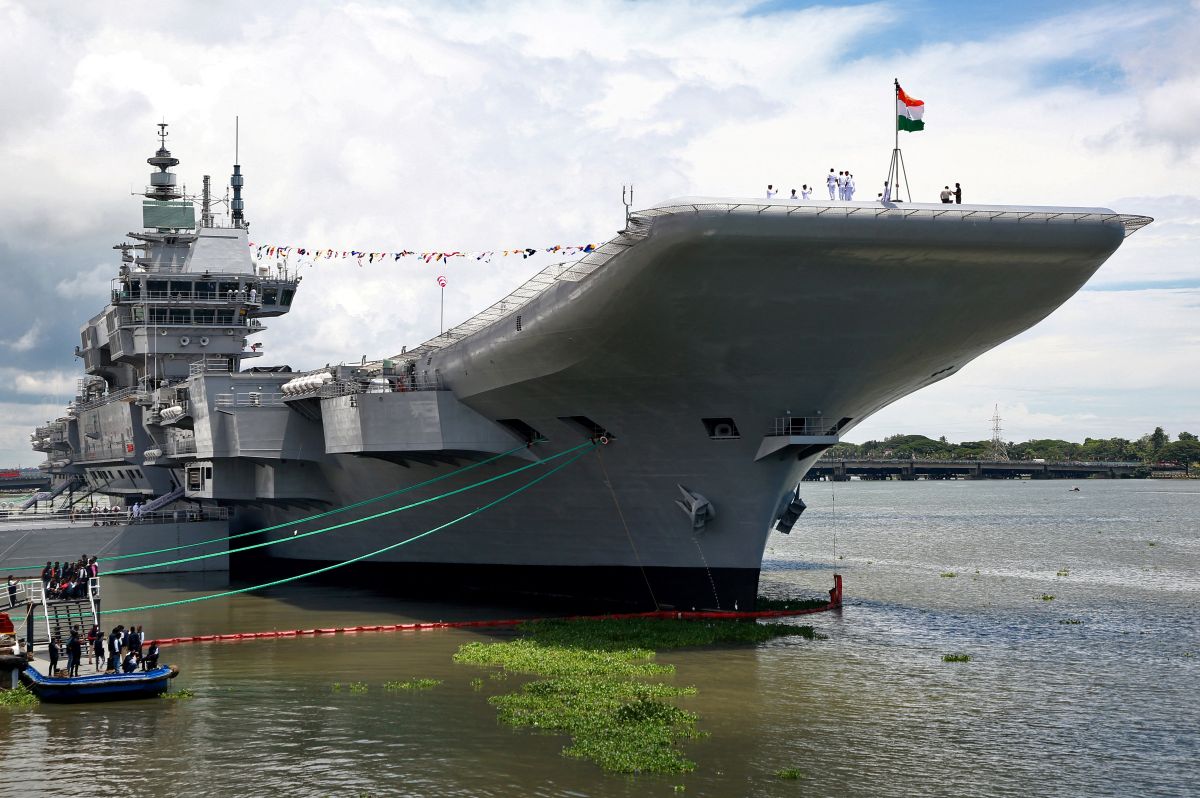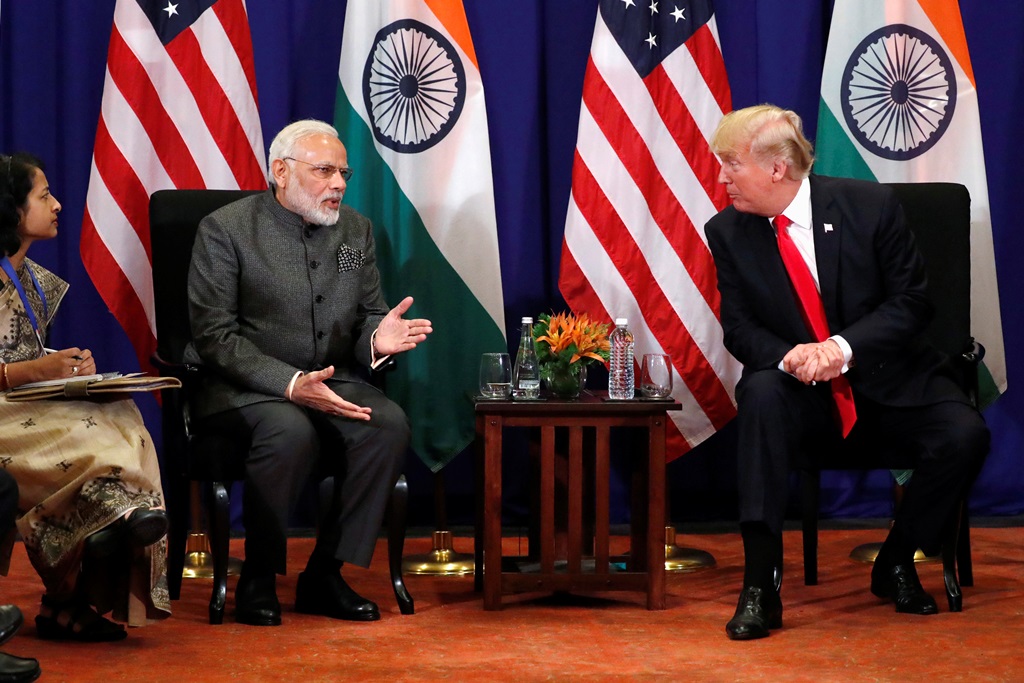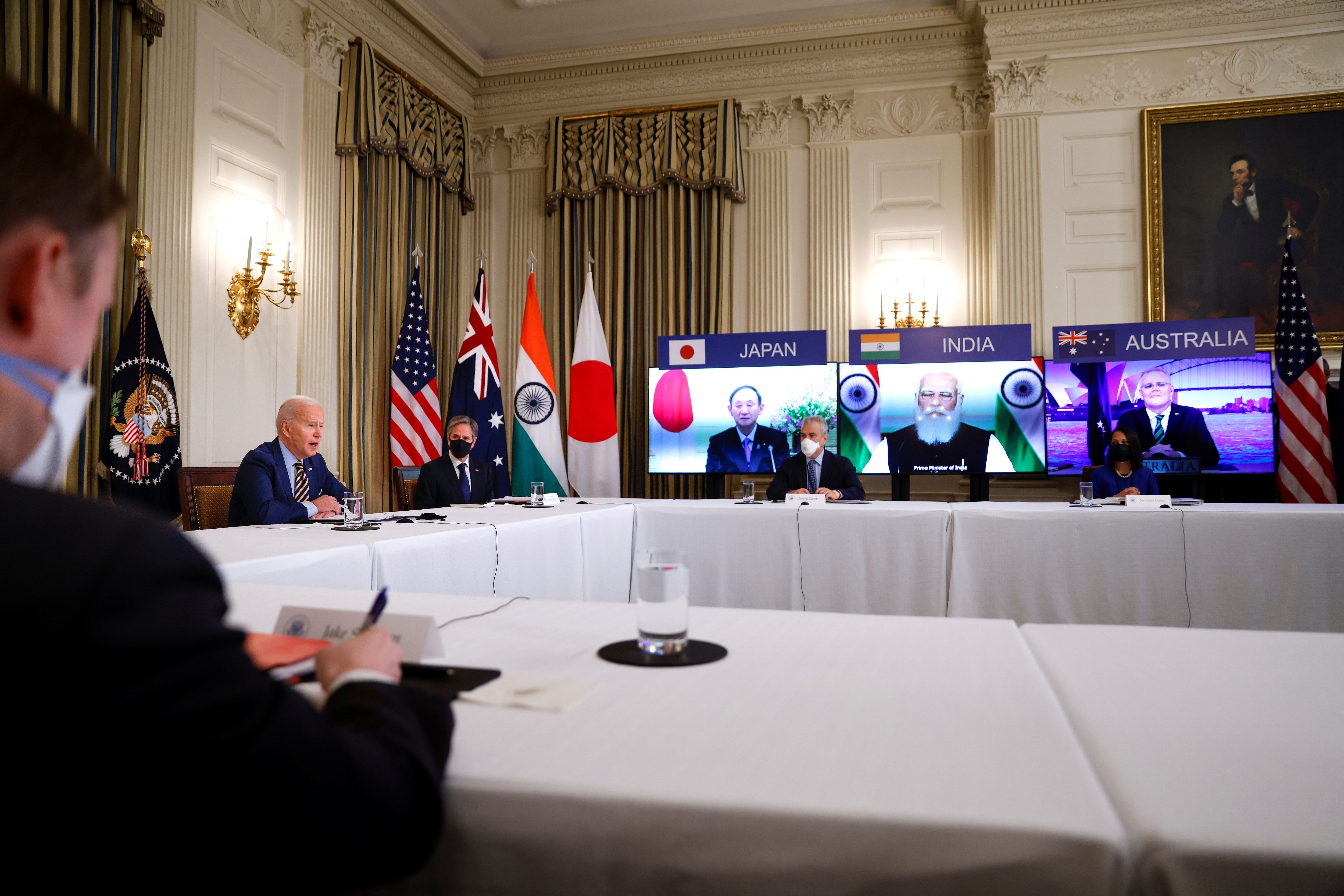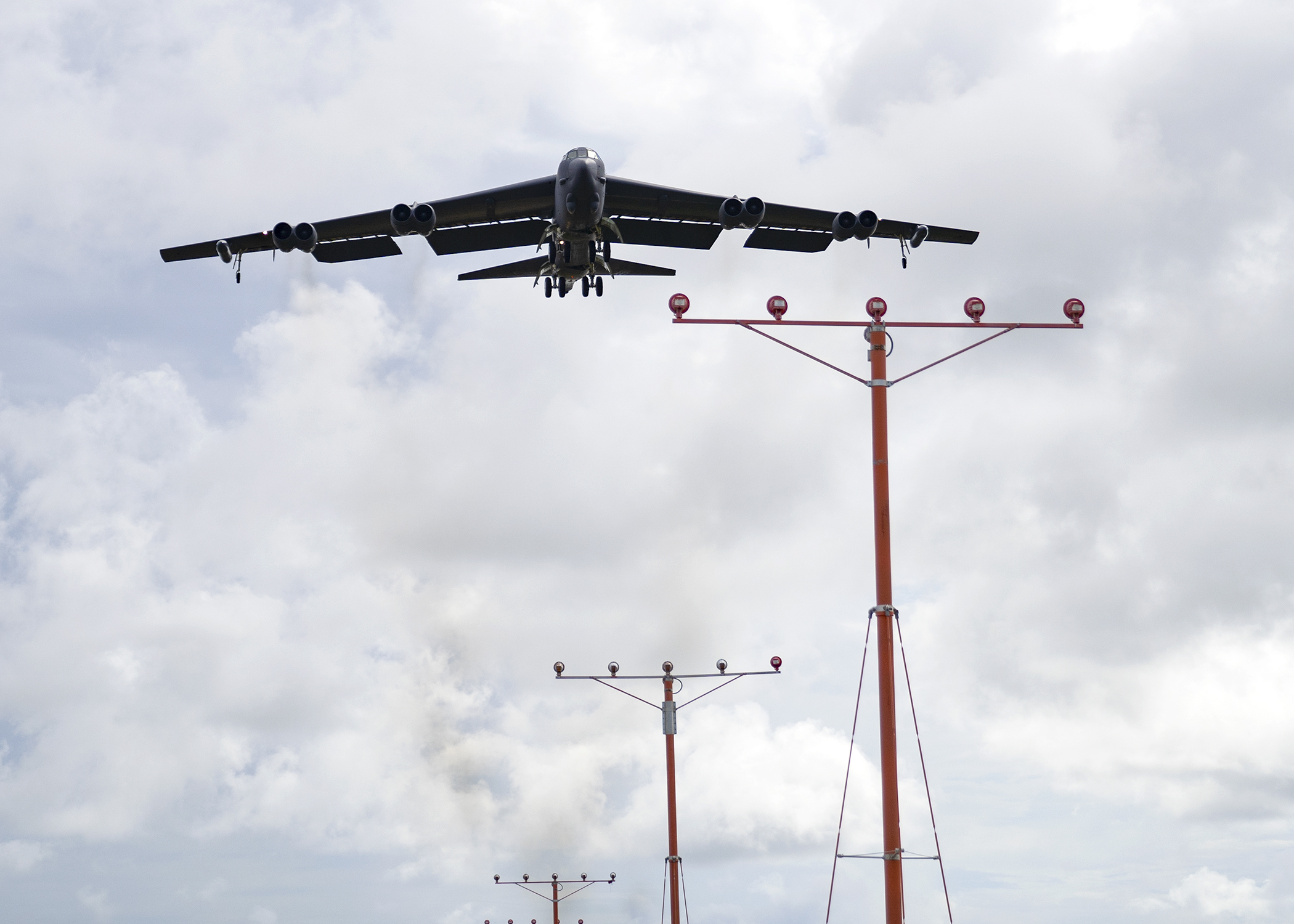India Emerges as a Key Power and Important Partner for the EU in the Indo-Pacific
India’s commissioning of its second aircraft carrier, the INS Vikrant, in September this year reaffirms the country’s aim to play a leading role in the Indo-Pacific. The country’s importance in the region will depend mainly on the course of the India-China rivalry, an increase in its economic potential, and the support provided to it by foreign partners. The convergence of goals in the Indo-Pacific strengthens India’s partnership with the U.S. and opens up opportunities for intensifying cooperation with the EU, especially in terms of connectivity, climate change, and the development of capacity in maritime domain awareness.
 SIVARAM V/ Reuters/ FORUM
SIVARAM V/ Reuters/ FORUM
India’s Indo-Pacific Strategy
The country has not adopted a single coherent document outlining its Indo-Pacific strategy, but its approach can be described on the basis of statements from leaders and initiatives undertaken in recent years. India defines the region in broad terms, encompassing both the Pacific and the Indian Ocean, from the coasts of Africa to the Americas. However, its main focus is on the Indian Ocean, where it is strategically located. In 2015, Prime Minister Narendra Modi unveiled India’s strategic vision for the Indian Ocean, called Security and Growth for All in the Region (SAGAR), which aims to promote the sustainable use of the oceans and a framework for a safe, secure, and stable maritime domain in the region. In the following years, the Indian government extended this policy to the Pacific Ocean, as evidenced by the adoption, together with Japan, in May 2017 of the “Africa-Asia Growth Corridor” initiative to strengthen connections between the two continents.
The most comprehensive Indian vision of the Indo-Pacific was presented by Modi in June 2018 in Singapore when he called for the construction of a “free, open, and inclusive” region. In April 2019, a separate Indo-Pacific Division was established at the Indian Ministry of External Affairs. At the East Asia Summit in Bangkok in November 2019, Modi announced the establishment of the Indo-Pacific Oceans Initiative (IPOI) as an attempt to implement the Indian vision. This multilateral cooperation platform is to coordinate the activities of the countries in the region around seven pillars, including maritime security, maritime resources, and connectivity.
India’s primary goal is to ensure stability and peace in the Indo-Pacific, including the security of sea lines of communication, through which around 90% of its trade by volume is transported. It also tries to avoid hegemony in the region by other powers (e.g., the U.S. or China), preferring a balance of power between multiple actors. The main principles of the strategy include respect for the sovereignty and territorial integrity of states, freedom of trade, peaceful settlement of disputes through dialogue, and compliance with international law. It supports ASEAN’s central role in ensuring the stability of the region and maintaining freedom of navigation and freedom of overflight over international waters, including the South China Sea. It presents itself as a “security provider” and a “first responder” in humanitarian emergencies and natural disasters.
International Cooperation
India’s potential in terms of the economy (fifth-largest), military (second-largest army and defence budget in the region after China) and demographics, as well as its strategic location make it a key player in the region. Thus, other actors that have adopted their own Indo-Pacific strategies recognise India as a crucial partner. This is in line with the Indian government’s approach to promoting multilateralism and networking partnerships with like-minded partners. India is a member of the most important regional multilateral initiatives such as the East Asia Summit, ASEAN Regional Forum, and the India Ocean Rim Association. Since 2019, India has been more actively cooperating with the Quad grouping (which includes also the U.S., Australia, and Japan), and in July this year it launched the I2U2 quadrilateral initiative (with the U.S., Israel, and the UAE). It has also intensified a number of trilateral dialogues (e.g., France-Australia-India, Japan-Australia-India). The Indians are also more willing to participate in joint maritime exercises, including those within the Quad (e.g., Malabar) or with France (Varuna).
India prioritises economic and development cooperation. Largely influenced by India, the Quad shifted its focus from security to socio-economic issues, including the launch of the Quad Vaccine Partnership to supply COVID-19 vaccines to countries in the Indo-Pacific, and the Supply Chain Resilience Initiative. In May this year, India joined a new U.S. economic initiative in the region—the Indo-Pacific Economic Framework (IPEF).
India looks favourably on the greater involvement of partners from outside the region, including Europe. The strategies of the EU, France, and Germany towards the Indo-Pacific were well-received. Indian diplomats point to the convergence of the seven priorities of the EU strategy with the seven pillars of the IPOI initiative, proposing the EU to take the lead in implementing the selected pillar. They count on the intensification of cooperation, especially in the field of economic development, infrastructure, digital transformation, connectivity, and the fight against climate change.
Challenges for India
In the political dimension, Indian activity in the Indo-Pacific is constrained by the ambiguity of its policy towards China. Chinese engagement in the Indian Ocean and South Asia, including the development of the Belt and Road Initiative and the expansion of China’s maritime potential, were one of the main reasons for India’s greater involvement in the Indo-Pacific. Initially, India emphasised the “inclusiveness” of its approach to show that its policy was not directed against any country. However, after the COVID-19 pandemic and clashes on the border with Chinese forces in June 2020, India has taken a more assertive approach, seeking economic decoupling with China and engaging in initiatives critically assessed by it, such as the Quad. However, fears of its stronger neighbour hold India back from openly joining the U.S. strategy of the containment of China.
The second challenge is the limited assets for action in the economic and military spheres. So far, India’s strategy and military capabilities have focused on land-based threats from two of its northern neighbours (Pakistan and China), which resulted in neglect of naval power. Only in recent years has it intensively modernised its naval forces, leading to the launch of the INS Vikrant aircraft carrier, the first one to be built in the country. After overcoming the pandemic slowdown, India is returning to the position of the world’s fastest-growing large economy (the IMF forecasts GDP growth of 7.4% in 2022). However, it is focused on internal challenges and has limited resources to support neighbouring Indo-Pacific countries. In the development of links in the region, Indians see an opportunity to improve their place in global production chains and bring to India some of the investments located in China. Increasing the impact in the region will require maintaining the fast pace of growth in the coming years.
Conclusions
Taking an active stance in the Indo-Pacific expresses India’s growing ambition to play a leading international role and move beyond its historic sphere of influence in South Asia. It wants to be a stabilising force and facilitate multilateral cooperation in the Indo-Pacific, which is to enhance the opportunity for prosperity of the countries in the region. However, India’s strategy remains vague and fluid. That may change with the evolution of international conditions, especially its relations with China. India will use the Quad and its partnership with the EU to strengthen its own economic and military potential and limit China’s influence as part of the regional policy of balancing. However, should Sino-Indian tensions escalate, India may be forced to join a possible anti-Chinese coalition, deepening divisions and destabilising the region.
Despite serious differences in approach to the Russian invasion of Ukraine, India remains a key partner for the U.S. and the EU in the Indo-Pacific, sharing their vision for the region and threat assessment, including concerns about Chinese policy. The U.S. has already engaged in strengthening India’s position, seeing it as a counterweight to China. For the EU, too, closer cooperation with India will serve to implement its strategy towards the Indo-Pacific. The three areas where the EU has the most to offer are connectivity, tackling climate change, and maritime capacity building. By developing existing initiatives (e.g., the EU-India Connectivity Partnership) and using the funds announced under the EU Global Gateway infrastructure investment strategy, the EU should intensify cooperation with India to support infrastructure projects, including transport, digital and energy, between the Indian Ocean and Europe, as well as the green transformation and the development of Indo-Pacific countries’ capacity in maritime domain awareness. To increase the visibility and effectiveness of joint projects, the partners may establish an “EU-India Indo-Pacific Fund”. Closer cooperation would be facilitated by the EU presidency of one of the IPOI pillars. While security cooperation will be of symbolic and political value in the foreseeable future, both sides can work together to reduce tensions between the U.S. and China and stabilise the rules-based order in the region.





